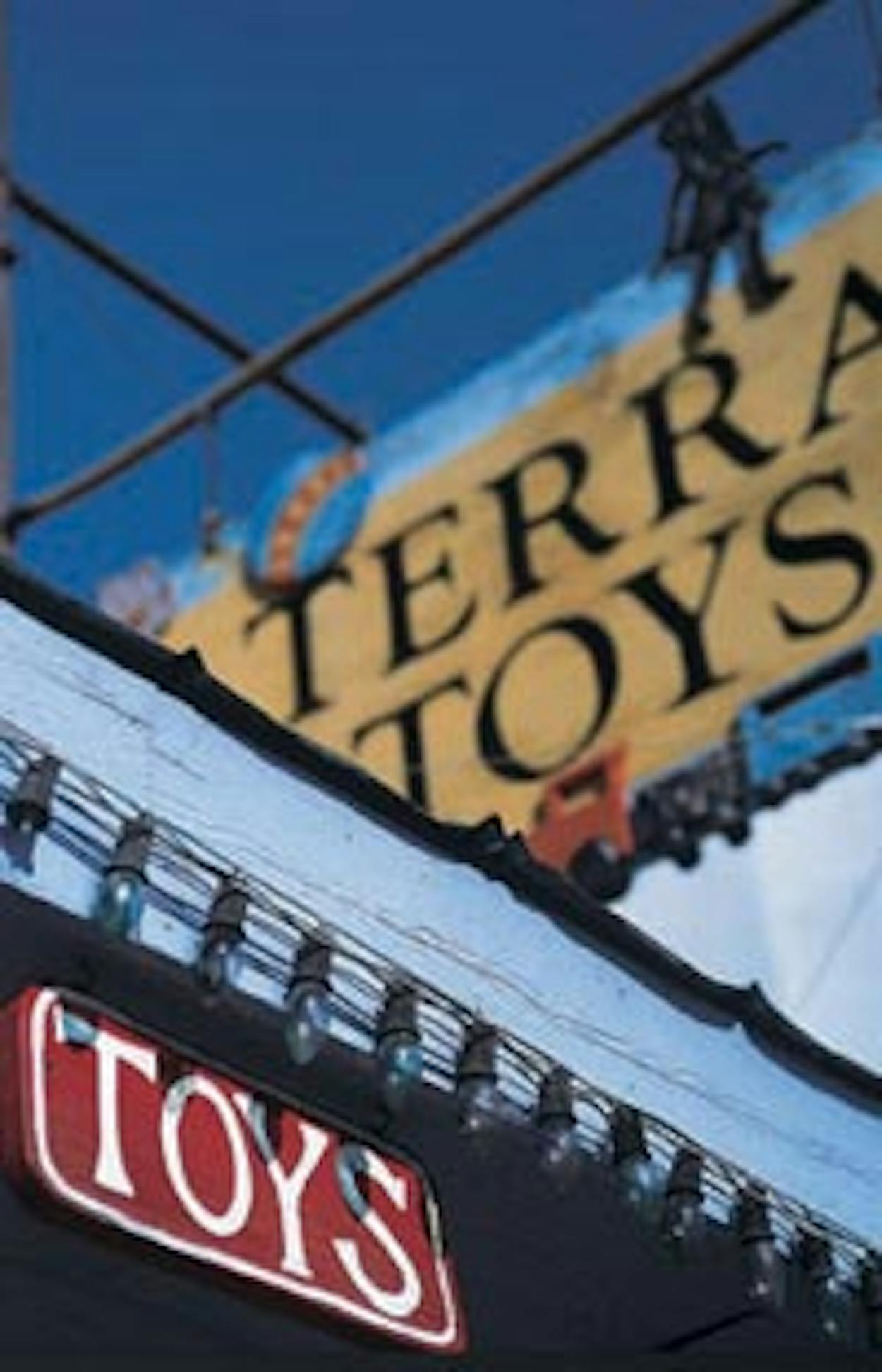RECENTLY, I READ A NEWSPAPER ARTICLE ABOUT something called “lifestyle centers,” a concept hatched by developers and retailers to attract consumers who are suffering from megamall-o-phobia. In a nutshell, these lifestyle centers—with their smaller scale, lush landscaping, and national specialty shops—are fancy strip malls pretending to be neighborhoods. Squeaky-clean, sanitized neighborhoods. Well, here’s a thought: Why not shop in a real neighborhood instead of a fake one? Miracle of miracles, a handful of quaint and quirky ‘hoods with the goods still thrive, tucked in the midst of the state’s biggest cities. ” And I’m not talking meccas of materialism like the Plaza at Preston Center in Dallas or infinite strips like Houston’s Westheimer. To make the cut, the following retail enclaves had to be home to locally owned, one-of-a-kind shops. (I’d hoped that walking from store to store would be irresistible, but in some places it’s merely possible—this is car-crazed Texas, after all.) Parking had to be painless. The urge to linger—or maybe even move to the neighborhood—had to be powerful. I had to feel a sense of community, whether from something as simple as a brochure listing the area’s shops or as horn tooting as a monthly block party. And payment had to be hassle-free, either by a major credit card or a personal check. So if you’re put off by the idea of lifestyle centers, if you’re sick of battling the crowds at the mall for the last Salad Shooter, if you can’t bear to purchase one more item made of Polartec, maybe, just maybe, you can rediscover the fun of finding the perfect present at a neighborhood near you.
Austin
South Congress Avenue
On the first Thursday of the month, well past the cocktail hour, throngs of shoppers crowd the streets and shops along the strip of South Congress from Academy to Annie streets. The night I was there, enjoying a little margarita-induced consumerism, I ran into absolutely everyone I knew. “Just look what free crackers, libations, and live music can do for community spirit,” I thought. Of course, the residents of South Austin have always had attitude to spare; it’s only natural that their bohemian pride would spill over into their commercial ventures. Of the couple dozen shops here, many of which specialize in resale and vintage clothing and furnishings, I hit the high spots.
Dallas
Deep Ellum
Just east of downtown, deep ellum may be lined with brick storefronts dating back to the early 1900’s, but you’d best forget any Norman Rockwell notions of Main Street before you visit. If you’ve got an open mind—and a strong stomach for multiple piercings—you’ll find an assortment of goodies in this four-block stretch of Commerce, Main, and Elm streets between the Central Expressway and Malcolm X. Although the area is best known for its dozens of bars and restaurants, during the daylight hours the atmosphere is downright tranquil. Great vintage-furnishings stores abound, as well as boutiques brimming with audacious club wear (the last time I wore black plastic was when I donned a trash bag one Halloween and went as a raisin). While I’m sure some folks have thigh-high vinyl boots or a forties microphone on their wish list, I’m limiting my touts to the area’s gift-ier businesses, which are clustered along Elm.
Bishop Arts District
In 1997 the bishop arts district in the oak cliff neighborhood, three miles south of downtown, was voted “Best Neighborhood Renaissance” by the editors of the Dallas Observer. Since then more shops, businesses, and especially restaurants have moved into the picturesque strip of twenties storefronts on Bishop Avenue between Eighth and Davis. The merriment in this nostalgia-tinged community (I kept looking around for Opie and Andy) is kicked up a notch during the two-day Jingle Bells on Bishop festivities November 30 and December 1, when stores stay open late, Santa roams the avenue, and carolers and bands fill the air with music.
Knox Henderson
I almost ignored the shops along knox-henderson, assuming that this trendy neighborhood in North Central Dallas would be a victim of Crate and Barrel-ization. But I was thrilled to discover that the shops on the Henderson end of the street have plenty of personality.
Fort Worth
Cultural District
Although camp bowie boulevard, a ribbon of red brick dating from the twenties, makes for a pleasant drive, most of the route is too frenzied for a leisurely stroll. The one exception, sort of, is the part between Arch Adams and Montgomery streets that runs through the Cultural District.
Houston
The Heights
This rediscovered community north of Interstate 10 and west of Interstate 45 simply reeks of neighborhood spirit. Shopkeepers gather on the sidewalks to gossip, dog walkers and power walkers parade down the shady median on Heights Boulevard, and newsletters and brochures about the area, which was planned in 1891, abound. Stores are scattered throughout the community, but the greatest concentration is on Nineteenth Street between Yale and North Shepherd.
Southampton
Sunset Boulevard cuts through a tunnel of trees, passing mansions that would do Norma Desmond proud. The stretch just north of the Rice University campus, between Ashby and Mandell streets, boasts a tiny commercial district that’s home to a trio of stores where you can spend hours and hours. So that’s what Celia and I did.
San Antonio
Southtown
If this part of Southtown—South Alamo Street from south St. Sary’s Street to Blue Star—were a play, it would win a Tony for set design, with its Victorian bungalows, picket fences, and exuberant landscaping. And its First Friday Art Walk would be nominated for best production number (although most of the action takes place at the far south end of the neighborhood, in the galleries and artists’ studios of the Blue Star Art Complex). But sadly, the current cast of shops includes only a few outstanding performers, all of them located between South St. Mary’s and East Sheridan.
- More About:
- Gift Guide







